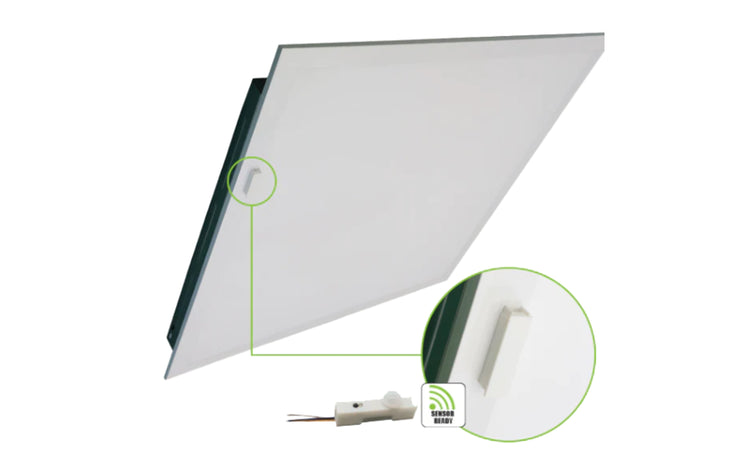Have you ever thought about how natural light can make indoor lighting smarter and more efficient? Daylight harvesting does just that by using smart controls with indoor LED lighting according to the amount of natural light present. This cuts down on energy use while keeping spaces well-lit and comfortable. Natural light is not just a source of illumination but also helps in lighting up our mood, supporting circadian rhythms, and reducing electricity bills.
As people learn its benefits and the need to save energy, building owners find ways to bring sunlight back into their properties. Together, LED lighting and daylight harvesting create a lighting system that enhances productivity and sustainability in buildings. Let's understand in detail what exactly daylight harvesting is and how it works:
What Is Daylight Harvesting?
Daylight harvesting is a smart lighting technique that uses natural light to illuminate the indoor spaces of modern buildings. This system uses sensors and controls to adjust LED lighting based on the natural light coming into a certain room. It is best for places where there's plenty of sunlight coming in through windows or doors. The purpose is to adjust lighting levels throughout the day by reducing the need for electric lights when natural light is sufficient.
How Daylight Harvesting Works?
There are two types of daylight harvesting: Open-loop and Closed-loop. Both lights have different functions and applications from one another. Let's see whats the difference is between these solar solutions and how these work!
How Smart LED Lighting Revolutionizing Daylight Harvesting
Integration with IoT and Building Automation
Managing the building's lighting system becomes easy if your smart LED lights are connected to IoT (Internet of Things) and building automation systems. These lights can be connected to other smart devices, such as motion sensors, thermostats, and security cameras, through wireless protocols like Bluetooth, Zigbee, or Wi-Fi. For example, if a motion sensor detects that the room is empty, the lights will turn off automatically to save energy. They can also work with HVAC systems to make sure energy isn’t wasted when rooms are unoccupied.
Through this setup, you can control these lights from one place using a central dashboard, which shows real-time data on energy use and system health. All these things can help you identify when maintenance is needed and find ways to save more energy.
Adaptive Illumination Zones
Smart LED lighting systems have adaptive illumination zones. These zones adjust the lighting within one space to perform different activities and user preferences. For example, if natural lighting is sufficient in the workplace area, the LED lights will dim or turn off automatically. At the same time, spaces that lack natural light will receive proper illumination through LED lights. Whether you are in a formal meeting or presentation or just a casual discussion, the lights can be set to softer or brighter tones according to the mood and ambiance.
Energy Harvesting Technologies
Energy-generating LEDs are smart lights that can illuminate and create electricity from sunlight. When daylight harvesting systems and LED lights are combined, they use sunlight during the day to power themselves and reduce the use of electricity from the grid. With its help, you can lower energy bills and create a more sustainable environment by decreasing dependency on fossil fuels and greenhouse gas emissions.
In both commercial and residential buildings, energy-generating LEDs can help reduce lighting costs, especially in areas with excessive natural light, like lobbies, conference rooms, and sunrooms. Besides, they are also helpful in schools and healthcare facilities to create energy-efficient spaces with high-quality lighting. Those buildings that use these technologies can contribute to green building certifications like LEED (Leadership in Energy and Environmental Design).
Additional Point
Virtual Sky Ceilings
These lighting systems use high-resolution LED panels to affect natural daylight and outdoor views. Together, virtual sky ceilings and daylight harvesting systems can improve the lighting in spaces that don't have much natural light, like interior rooms, basements, or densely built urban areas. With these lights, you can have a feel of nature while sitting at your home, which means that the design of these lights looks like the real sky. It changes in ways that make it seem like the sun is moving and the weather is changing, just like in nature. Virtual sky ceilings provide consistent light quality and reduce the need for artificial lighting during the day.
Why You Should Implement Daylight Harvesting?
Environmental Impact
Reducing the use of electric lights can easily minimize carbon footprint and environmental impact such as air pollution which is connected with electricity generation. It helps in providing a cleaner and healthier environment.
Improved Visual Comfort
Natural light creates a more comfortable and pleasant indoor environment. It reduces eye strain and helps to improve the overall health of building residents.
Long Term Maintenance Savings
If you have installed daylight harvesting, you are free from frequent replacements. Also, less maintenance is required for lighting fixtures due to natural lighting, as LED lights switch off automatically. This leads to long-term cost savings and minimized disruption to building operations.
Health Benefits
Natural light helps in switching people's mood, reducing stress, and improving productivity. Exposure to natural light supports the body's natural circadian rhythms, which can contribute to better sleep patterns and overall health among occupants.
Long-Term Investment
Installing daylight harvesting systems can increase the overall value of a property by improving its sustainability credentials and attractiveness to tenants or buyers looking for energy-efficient and environmentally friendly buildings. This investment in sustainable features can help in long-term financial returns and increase the marketability of the property.
Wrapping Up
If you also want to take advantage of these benefits, you can also install daylight harvesting on your property. You can trust Maverick LED to purchase outdoor luminaries and other solar solutions. You will get high-quality material from them. Save electricity and your money with just one solution.


